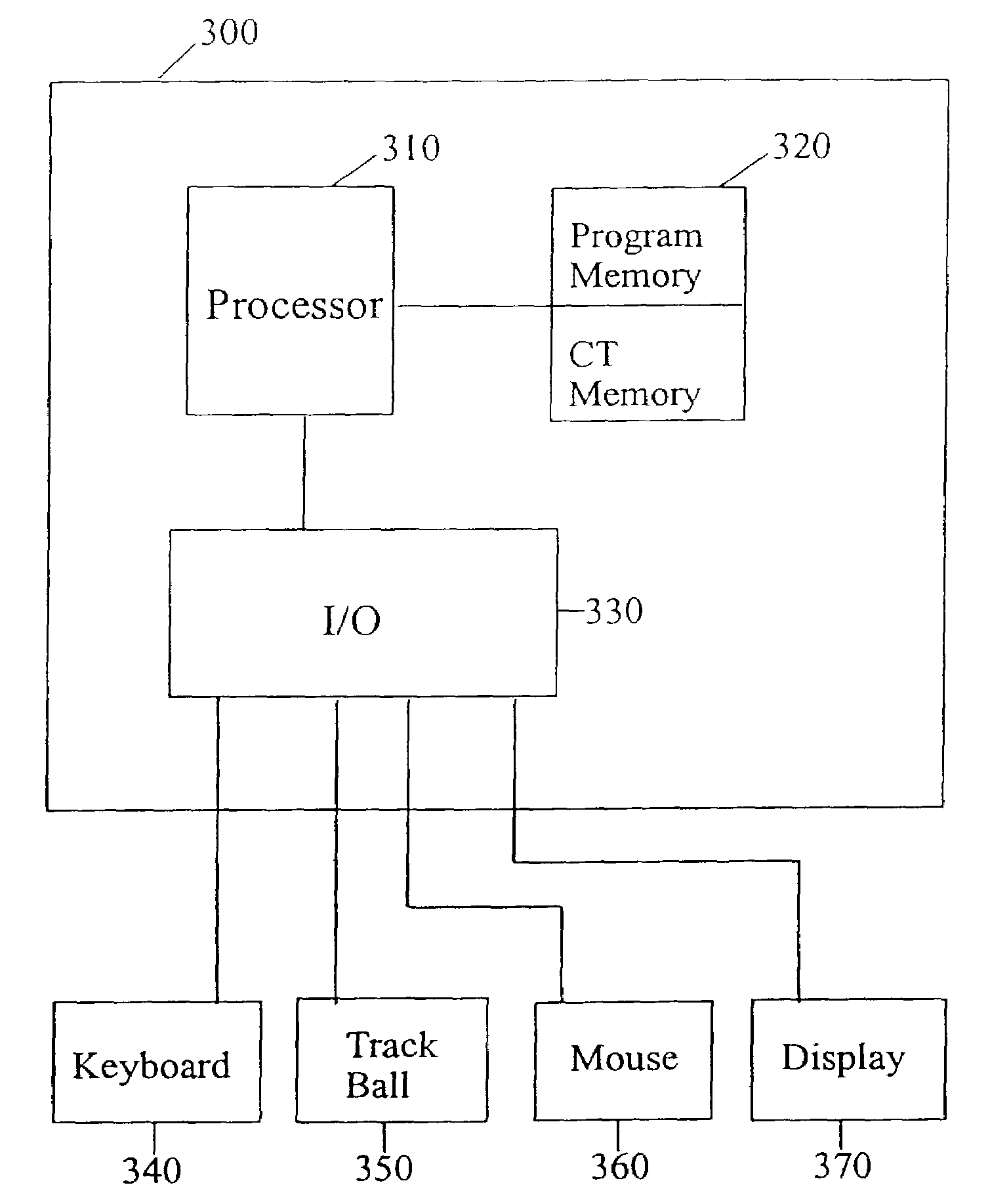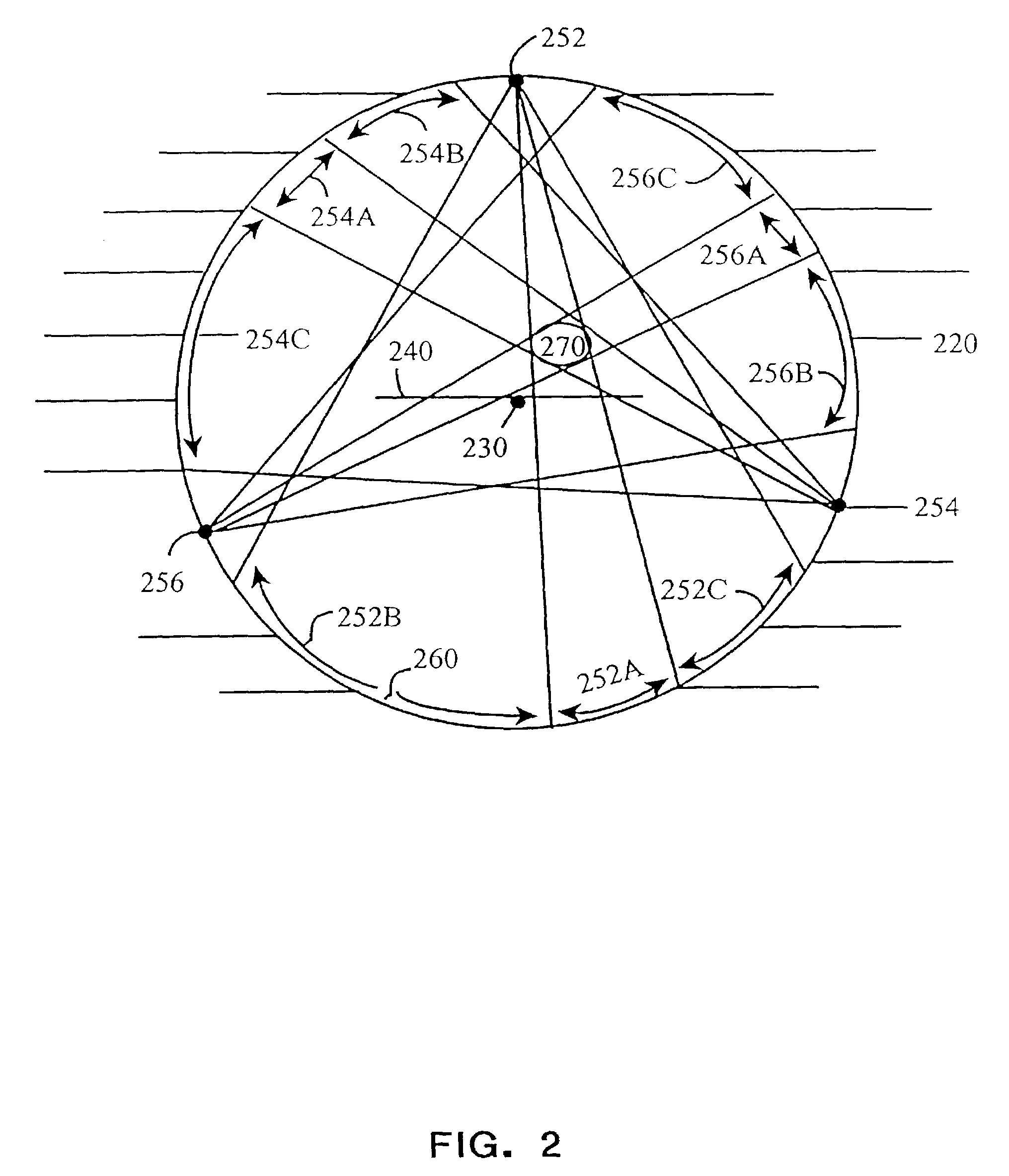Graphical user interface for display of anatomical information
a graphical user interface and anatomical information technology, applied in the field of system for rendering anatomical information, can solve the problems of difficult to use conventional x-ray systems to examine portions of the body, information about some of these structures is likely to be obscured, and the speed and accuracy of conventional x-ray systems are difficult to achieve. , to achieve the effect of optimizing the speed and accuracy
- Summary
- Abstract
- Description
- Claims
- Application Information
AI Technical Summary
Benefits of technology
Problems solved by technology
Method used
Image
Examples
Embodiment Construction
[0050]FIG. 3 is a block diagram of an illustrative computer system 300 useful in the practice of the invention. As shown, system 300 comprises a processor 310, a memory 320 and input / output interface 330. The input / output interface connects the processor to an input device (such as keyboard 340, a trackball 350, a mouse 360 and / or any other device capable of communicating and / or processing commands and inputs to the processor) and a display monitor 370. Illustratively, the processor is a 500 MHZ Intel Pentium III (Reg. TRANSCEIVER MODULE) dual microprocessor.
[0051]Memory 320 typically is a mixture of semiconductor random access memory (RAM), one or more hard disk drives and / or CD-ROM drives, perhaps a floppy drive, and one or more tape drives. Stored within memory 320 are an operating system, application programs and the data representative of one or more series of CT (or other three-dimensional datasets like MRI, ultrasound, PET) sections of one or more patients. Each series of CT ...
PUM
 Login to View More
Login to View More Abstract
Description
Claims
Application Information
 Login to View More
Login to View More - R&D
- Intellectual Property
- Life Sciences
- Materials
- Tech Scout
- Unparalleled Data Quality
- Higher Quality Content
- 60% Fewer Hallucinations
Browse by: Latest US Patents, China's latest patents, Technical Efficacy Thesaurus, Application Domain, Technology Topic, Popular Technical Reports.
© 2025 PatSnap. All rights reserved.Legal|Privacy policy|Modern Slavery Act Transparency Statement|Sitemap|About US| Contact US: help@patsnap.com



